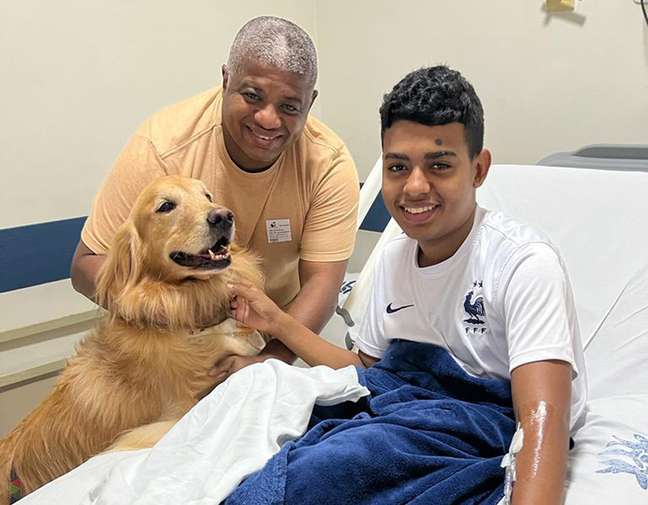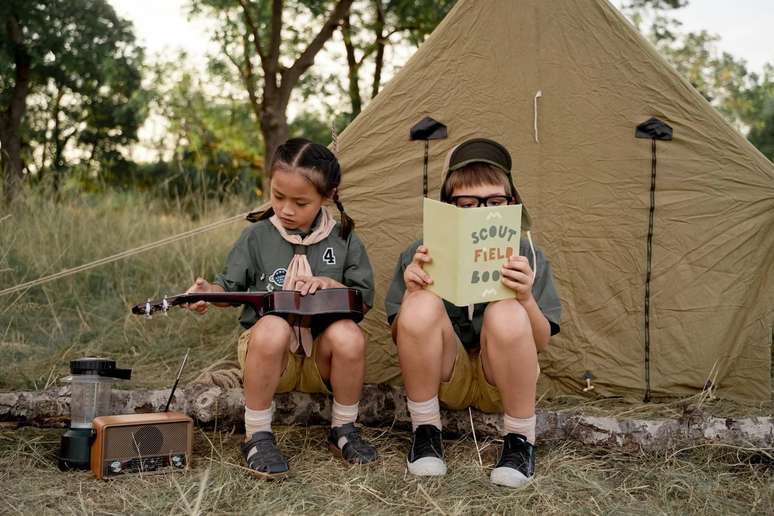Learn about the project that brings pets to cheer up little patients and find out how they contribute to treatment
Maybe you’ve heard of Animal Assisted Therapy (AAT) as a form of complementary treatment in various cases, from issues related to physical and intellectual disabilities to supporting bedridden people, providing a sense of well-being. Indeed, those who love pets tend to melt when they see a four-legged friend approaching – even more so when it comes to children – and this reaction of joy tends to reflect on health.

It was with this in mind that the Next hair project was conceived and founded by Roberta Araújo, promoting the meeting of pets with people who may need the kind of affection that only animals can give us. Among the various activities that the non-profit association carries out is the biweekly visit of the dog to the Lagoa Pediatric Center, of the Protonbabay Group, in Rio de Janeiro. There, specifically, only dogs participate (i Penelope and the life alternate with each visit), but the initiative also includes cats, rabbits and even an owl.
Requirements for animal volunteering
To volunteer, the puppy must be over 1 year old and spayed – this is because the service is often done in a group and a female in heat, for example, can interrupt the whole process. In addition, they go through a dressage phase and evaluation, as Patrícia Calainho, care coordinator at Centro Pediátrico da Lagoa and spokesperson for the project explains: “This is done so that it is possible to notice if the dog is reactive to stressful situations with noise, maintenance, jealousy of the owner .. All of this is evaluated and then you have to pass a veterinary evaluation that will check the health of the dog. “
Subsequently he undergoes three test visits, the aim of which is to observe what will be the behavior and what is the profile of the animal“whether it would be better to work in long-term homes, with the elderly or with children, for example,” says Patricia, who also recalls that the animal’s health and well-being are taken very seriously.

How the visit works
The dynamics vary by institution. At the Lagoa Pediatric Center patients can interact with the dog in the “tapetão”, an area set up by the hospital to receive beloved visitors, or in the bed itself, for those who cannot leave the room.
” Children can and should cuddle, there is interaction. We simulate the procedures that follow in the hospital: venous access, an injection, seeing how the ear is doing, measuring blood pressure, among other procedures. Let’s do these simulations, turning these guys into little doctorsso that that hospital routine, sometimes very invasive, is transformed into something more playful, facilitating the approach of the multidisciplinary team “, reports Patricia. of the slightly lighter hospitalization.

For the medical coordinator of infectious diseases of the Prontobaby Group, André Ricardo Araújo da Silva, the benefits of the visits are evident, especially thanks to the simulation of treatments. “Being a trained, tame and docile dog, he is calm and this demystifies the question of these procedures which are invasive and painful for the child,” he says. Also, Andrew remembers it contact with pets brings the little ones closer to the family environment, as many of them have pets in the house. “There are children who already have empathy for the animal, others develop over time, which is important for sociability. It is a fun and enjoyable time for everyone,” says the doctor.
In addition to the requirements for dogs, highlighted by Patricia, the infectologist highlights some conditions in relation to patients . “Children admitted to intensive care, with severe cases of infectious diseases or with multidrug-resistant germs, which can be transmitted by contact to other people, cannot participate in pet therapy. The same goes for children with allergies that can be exacerbated by the presence of the animal, “he explains. Even little ones who are very afraid of pets are excluded – the idea is that it is a time of joy and relaxation, not fatigue.

For those who want to volunteer
In Pêloproximo there are two ways to participate: as a dog-free volunteer, who helps with the care, and with a dog, who will go through all these evaluation stages. Patricia explains that the animal belongs to the volunteer who registers and is trained to be the handler, ie there is no “loan” of the dog. Volunteering takes place in collaboration between the pet and its human companion.
To check all the information, simply access the project website by clicking here. To follow, a few visits from Life ❤️
+The best content in your email for free. Choose your favorite Earth Newsletter. Click here!
Source: Terra
Benjamin Smith is a fashion journalist and author at Gossipify, known for his coverage of the latest fashion trends and industry insights. He writes about clothing, shoes, accessories, and runway shows, providing in-depth analysis and unique perspectives. He’s respected for his ability to spot emerging designers and trends, and for providing practical fashion advice to readers.




![Plus Belle La Vie ADHER: What awaits you on Thursday, April 24, in 318 episodes of 2025 [SPOILERS] Plus Belle La Vie ADHER: What awaits you on Thursday, April 24, in 318 episodes of 2025 [SPOILERS]](https://fr.web.img3.acsta.net/img/2a/38/2a38aeae51764f794ff91cccd0bb0925.jpg)


